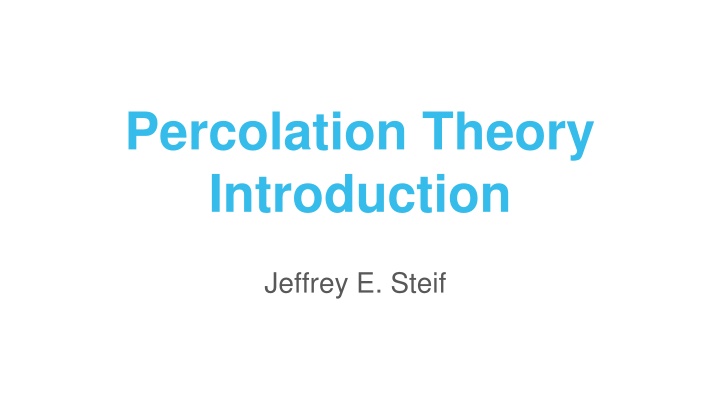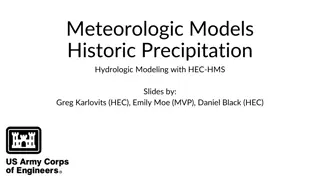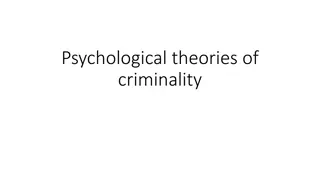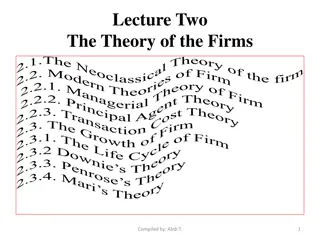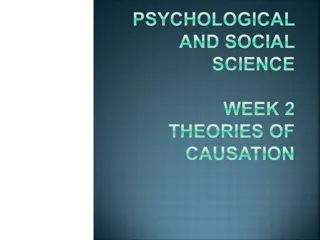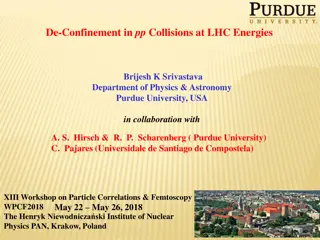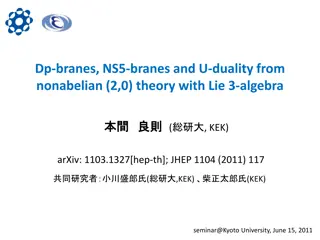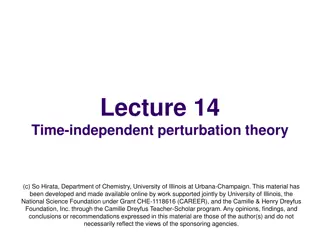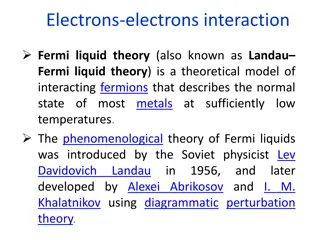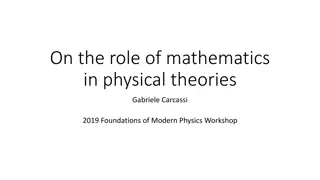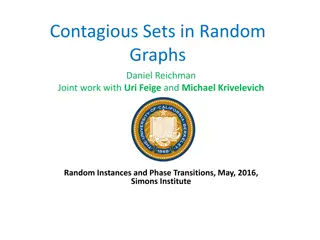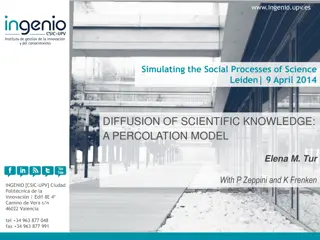Percolation Theory in Physical Systems
Percolation theory explores connectedness in systems through models of random graphs with geometric constraints. Learn about the terminology, history, rock problem, and the square lattice bond percolation model. Dive into common models like the 1/2 Bond Percolation Model.
Download Presentation

Please find below an Image/Link to download the presentation.
The content on the website is provided AS IS for your information and personal use only. It may not be sold, licensed, or shared on other websites without obtaining consent from the author.If you encounter any issues during the download, it is possible that the publisher has removed the file from their server.
You are allowed to download the files provided on this website for personal or commercial use, subject to the condition that they are used lawfully. All files are the property of their respective owners.
The content on the website is provided AS IS for your information and personal use only. It may not be sold, licensed, or shared on other websites without obtaining consent from the author.
E N D
Presentation Transcript
Percolation Theory Introduction Jeffrey E. Steif
Percolation Percolation theory, in essence, is the measure of connectedness in a system. Percolation theory describes different types of models of random graphs that have physical applicability hence there are geometric constraints.
Terminology Slight difference in terminology due to the history of percolation theory (will discuss next slide). If an edge is present in a graph, it is called open; otherwise, it is called closed. If a vertex is present in a graph, it is called occupied; otherwise, it is called empty. The word bond is used interchangeably with edge and the word site is used interchangeably with vertex.
History The term percolation in physics, chemistry and materials science, refers to the movement and filtering of fluids through porous materials. A representative question (and the source of the name) is as follows; assume that water is poured on top of some porous material (i.e., a rock). Will the water be able to make its way from the top to the bottom if each hole in the rock is randomly connected by an open channel with some probability p? Cross-section of porous rock:
Rock Problem Continued In other words, for a given p, what is the probability that an open path exists from the top to the bottom in the rock? If the rock is significantly bigger than the channels and holes, we can approximate as infinite lattice. So, does an infinite open path exist? Note: obviously, for a physical object the approximation to infinity isn t exactly right, but as n gets sufficiently large, the probability that you re going to have a path of a sufficiently large length vs. an infinite path length is negligible.
Model We Will Be Focusing On Square n by n lattice 2 Bond percolation model Edges between all adjacent vertices with distance 1 (i.e., vertically and horizontally edges, but not diagonally). Each bond is open with probability p, or closed with probability 1 - p. They are assumed to be independent and p [0, 1] System percolates iff opposite sides are connected by open bonds
Common Models (1/2) Bond Percolation Model: All vertices are present and (open) edges are present w.p. p. (This is the model we will be focusing on in this presentation)
Common Models (2/2) Site Percolation Model: All edges are present between neighbors and vertices are present w.p. p.
More Examples Model System Open Bond Closed Bond Percolates electricity material conductor insulated conducts fluid flow material open channel blocked channel porous social interaction population communication channel no communication channel communication
Basic Questions We Are Interested In Does there exist an infinite open cluster? What are the size distributions of the open clusters?
Definitions Def. Let C(x) denote the connected open component x in our random graph (i.e., C(x) is a random variable dependent on open edges). Def. Let C = C(0). Note that the percolation function (p) = Probp(|C| = ) Informally, (p) outputs the probability, given the parameter p, that the size of our component C (including the origin) is equal to infinity. Otherwise stated, if we start at one arbitrary point (called the origin), what s the probability that we can go out to infinity?
Visual n 3 2 1 1 2 3 n
Percolation Phase Transition Probability When n is sufficiently large, theory guarantees a sharp threshold/critical probability constant denoted as pcs.t. If p > pc, (p) > 0 (by Kolmogorov s zero-one law, a.s. an infinite open component. In other words, with a high p, the system a.s. percolates) If p < pc, (p) = 0 (a.s. there is no infinite open component. In other words, with a low p, the system a.s. does not percolate) Q.: Is there a p < 1 s.t. (p) = 1? NO. In order for (p) = 1, p has to equal 1, hence every edge surrounding the origin is guaranteed to be open when p = 1. Between pc p 1, (p) increases monotonically.
1 Percolation Probability pc 1 p
What Is The Critical Threshold pcEqual To? For the square lattice 2, pc= 1/2 for bond percolation, a fact which was an open question for more than 20 years and was finally resolved by Harry Kesten in the early 1980s. The proof is very long and complicated.
Advanced Percolation Theory Percolation theory is not restrained to the second dimension and is studied in higher dimensions (displayed to the left). There are also different lattice shapes that are studied (displayed below).
Basic Idea/Summary If you consider some infinite lattice with a random process that opens or closes edges, then you have a random graph model. Initially, we were curious if there was an open path from one side to the other (i.e., the rock problem). Then, we were curious in a more abstract question does an infinite open path exist in the graph? Hence if one does exists, a.s. there is an open path from one side to the other.
